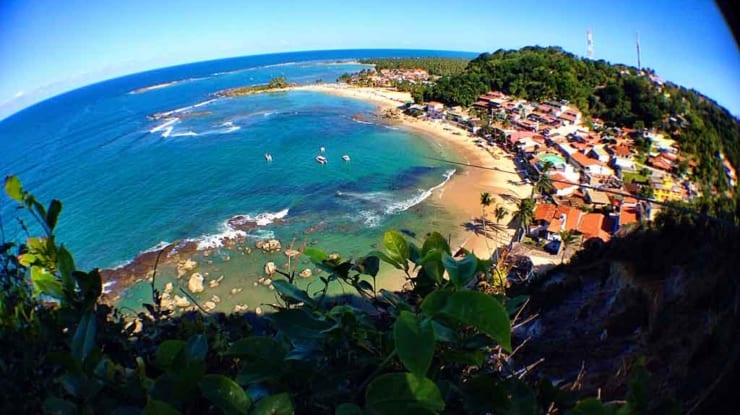Este post também está disponível em:
Português
English
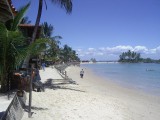
The Dendê Coast has an area of 5,815.62 km², about 115 km of coastline, distributed among eight of the nine municipalities that make up this tourist area, starting in the north to south direction by the municipality of Valença and extending through Cairu, Taperoá, Nilo Peçanha, Ituberá, Igrapiúna, Camamu and Maraú.
The municipality of Presidente Tancredo Neves, the only one not on the coast, is located in the northern portion in territory continuous to Valença.
This tourist area is part of the southern coast of the State, located between the Baia de Todos os Santos, on the northern edge and the Cacao Coast to the south.
The region presents exuberance in its natural attributes, is well known for its beaches of clear and warm waters, with varied formations of coral reefs and vast coconut groves, being among the best in the country in the main guides of the genre.
The fluvial archipelago of the Una River is home to a variety of paradisiacal islands – Tinharé, where Morro de São Paulo, Boipeba and Cairu, where the seat of the municipality of the same name is located.
The Baia de Camamu, the second largest bay on the coast of Bahia and the third largest in Brazil, belongs to this region, housing ten islands with unspoiled natural landscapes, beaches of rare beauty, native forests, mangroves and coconut trees.
An extensive coastline of placid waters, ideal for sailing, diving and fishing.
The waterfalls and rapids are places for practicing extreme sports.
The Conservation Units preserve the rich fauna and flora.
The great ecological diversity shares the landscape with a rich historical and cultural heritage, as well as the traditional populations, who keep heritages from Colonial Brazil.
The nominal and visual brand Costa do Dendê is linked to the abundance of oil palm trees in its territory, which are the raw material for the production of palm oil, one of the main ingredients of traditional Bahian food.
This region is home to 84.5% of the oil palm production in the State of Bahia, which is the second largest producer in the country, behind only Pará.
The main tourist segment offered by all destinations on the Costa do Dendê is Sun and Beach, but the region has been advancing in the offer of Ecotourism products and services and other segments such as Cultural, Nautical and Adventure, in specific destinations.
The tourist destinations that stand out in relation to the attraction of tourist flows are Morro de São Paulo, Boipeba, Barra Grande.
The others receive tourists on a smaller scale.
To the extent that there is an improvement in tourism products and services, tourist and basic infrastructure and public services necessary to boost the activity, the tourist flow will tend to increase.
The best use of these destinations also requires investment in promotion and marketing actions in order to disseminate knowledge and generate interest from the community and tourists.
In addition to the set of beaches located on the Costa do Dendê, there is also a large number of rivers that are fundamental to the balance of that ecosystem, as well as potential attractions for Tourism.
Among the Hydrographic Basins are:
- Rio de Contas
- Rio Jaguaripe
- Rio Jequiriçá
- Rio das Almas
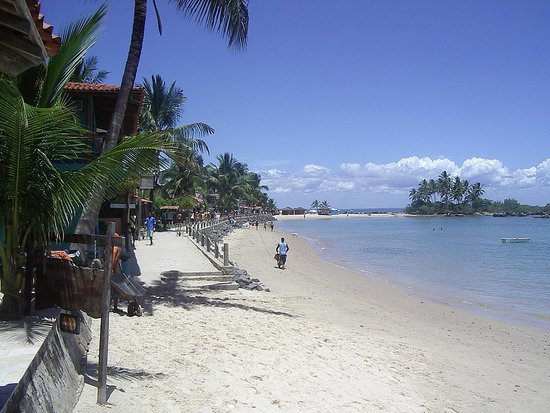
Tourism on the Dendê Coast
Costa do Dendê offers diversity of natural scenery, highlighting more than 115 km of beaches, three large islands and the Bay of Camamu.
The Dendê Coast is composed of the municipalities of Boipeba, Cairú, Camamu, Igrapiúna, Ituberá, Maraú, Nilo Peçanha, Taperoá and Valença, and as its name suggests, it is where palm oil is produced, a basic ingredient of Bahian cuisine.
It is in this Tourist Zone that the fluvial-maritime archipelago of the Una River is located.
In this region of the Dendê Coast coastline cut out and dominated by archipelagos, south of the Recôncavo Baiano, is the town of Morro de São Paulo, one of the best known and most sought after tourist spots in Bahia, located on the island of Tinharé.
In Morro de São Paulo there is a bit of everything: beach, commerce, historical monuments, bars, restaurants, nightclubs, well-structured tents by the sea and ecotourism.
From there you can go hiking to more distant beaches and take a trip to the village of Gamboa.
The Ilha de Boipeba on the Costa do Dendê is second to none in the Caribbean: it is one of those paradisiacal places, with calm sea beaches and clear waters.
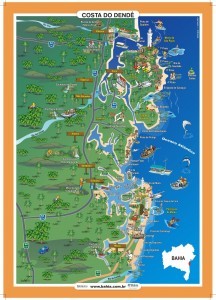
It is possible to dive among shipwrecks, swim in natural pools full of colorful fish, take boat trips through rivers and mangroves, follow trails in the middle of the Atlantic Forest and buy handicrafts made of coconut and piassava straw.
You will come across interesting villages, centuries-old churches and houses from the beginning of the 20th century.
The same can be said of the Península de Maraú on the Dendê Coast, where ecological tourism has been expanding. Despite the presence of two large resorts there, the place has not lost its simplicity.
On the mainland, Valença on the Costa do Dendê is the main city, which functions as a commercial warehouse for the flow of production from neighboring municipalities.
In addition to the port, which guarantees the crossing to the islands, Valença has an important preserved historical center. On its beaches, the structure for receiving visitors has grown and improved in recent years.
Valença Airport allows the operation of Boeing 737 aircraft and there is also an airstrip for single-engine aircraft in Morro de São Paulo. There are regular road and sea transportation services.
The region has electricity, drinking water, sanitation and telecommunications services in several locations.
Main beaches, cities and towns
The Costa do Dendê is characterized by beautiful and unspoiled beaches, with clear and warm waters. Cairu, Camamu, Valença, Taperoá, Igrapiúna and Ituberá are some of the municipalities that make up the region, which was named after the plantations of the coconut palm, whose extracted oil is one of the most famous ingredients of Bahian gastronomy.
The gateway to the Dendê Coast, for those leaving the capital of Bahia, is Valença, a city founded in the 18th century and located about 120km from Salvador. It is from there that boats leave for destinations such as the islands of Boipeba and Morro de São Paulo – the latter probably the most famous location in the region.
1. Ponta do Curral
We have a special suggestion for you to include in the Dendê Coast program: visit Ponta do Curral beach, one of the most preserved in the region. It is just over two kilometers walk from Guaibim Beach, in Valença, and in front of Morro de São Paulo – where you can take a boat;
The place enchants by its visual and tranquility.
Famous for being where the first heads of cattle from Brazil landed, the locality is a private farm with a total of 530 hectares and where only the people who work there live. Without tents or other infrastructure, it is worth for the beautiful landscape and environment conducive to relaxation.
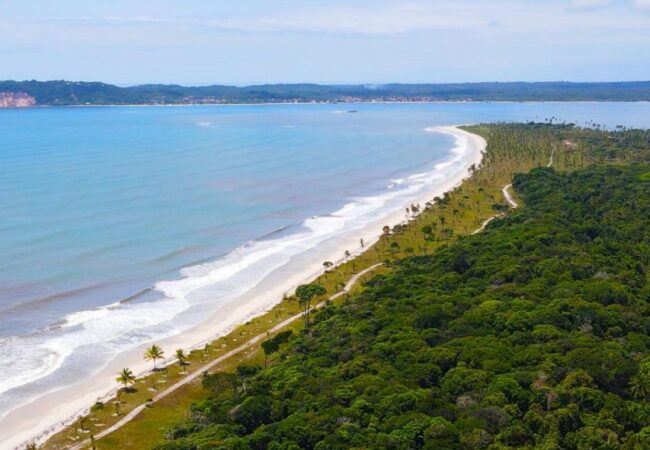
2. Morro de São Paulo
Located in the municipality of Cairu, inside the island of Tinharé, Morro de São Paulo is the most popular destination of the Dendê Coast.
The fame is not for nothing. The natural beauty of the place is fascinating and the tourist infrastructure is excellent. The center of Morro was recently restored and has only two streets, where are the main restaurants, inns and a lot of hype during the night. Be sure to take a walk to the fort and the lighthouse, the two most important monuments of the place; go to the First Beach, Second Beach, Third Beach, Fourth Beach and Encanto Beach; and take a boat trip.
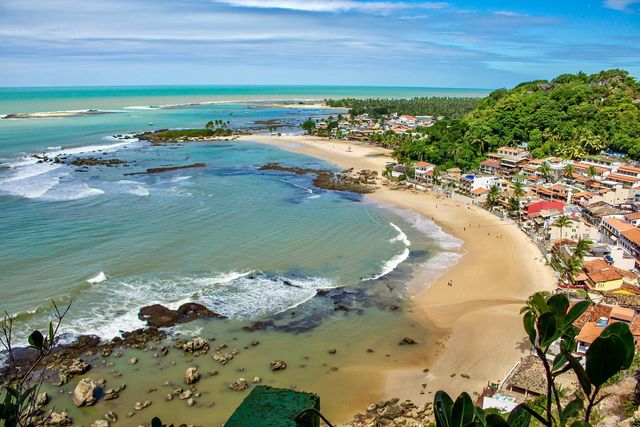
3. Boipeba Island
The destination is ideal for those seeking tranquility amid paradisiacal beaches and charming inns, without many tourists and hype.
The island, whose main attraction is nature, is bathed by the ocean on one side, and on the other by the Inferno River. Its villages are Moreré, Velha Boipeba, Monte Alegre and São Sebastião (also known as Cova da Onça). In addition to the crystal clear and calm waters, the place is surrounded by Atlantic Forest, restinga, dunes, reefs and one of the largest mangrove reserves in Brazil.
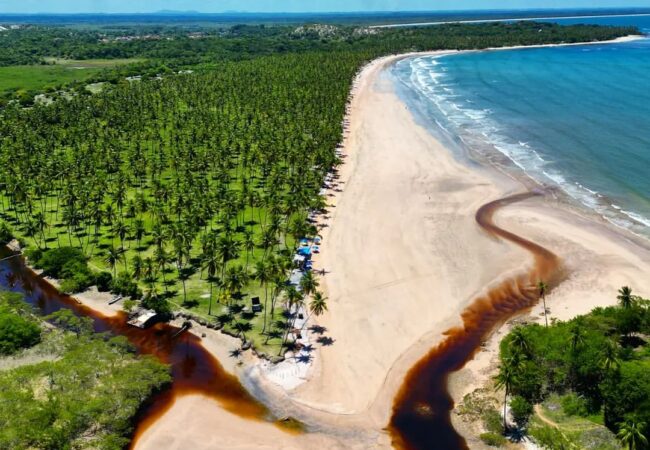
4. Maraú Peninsula
The Maraú Peninsula is a true ecological sanctuary. There are more than 40 kilometers of preserved beaches, little known. At low tide natural pools are formed that reveal schools of colorful fish. One of the most beautiful destinations is the beach of Taipu de Fora, characterized by corals that further embellish the turquoise sea.
Barra Grande is the largest and most sought after tourist village. Because of this, its sandy strips are usually fuller. The infrastructure of the entire peninsula is excellent, with charming inns and delicious restaurants.
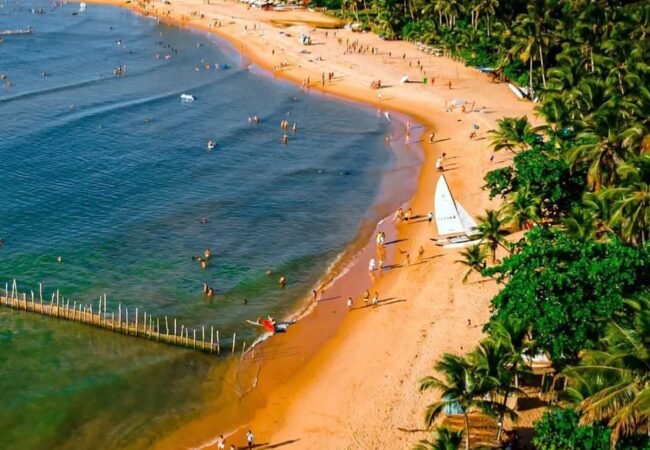
5. Ituberá
Despite not being bathed by the sea, like most of the cities of the Costa do Dendê, Ituberá reserves a fascinating natural landscape;
Its waterfalls are the biggest attraction, especially the Pancada Grande and Castro Alves. The destination is located on top of a hill and also has historical sites such as the Mother Church of Nossa Senhora da Conceição, the Church of Santo André and the Historical Village of Itajaí.
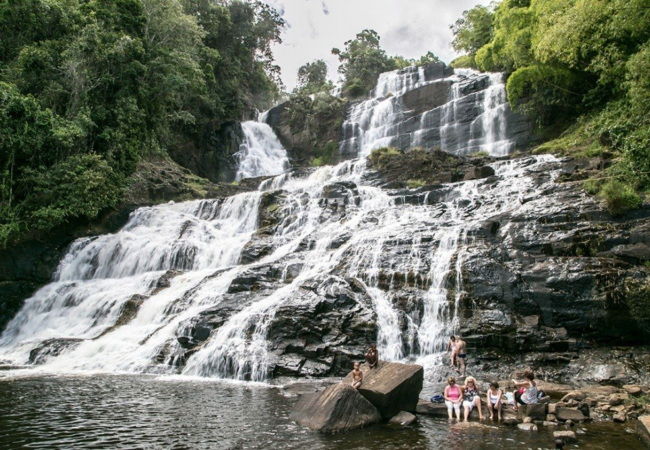
6. Igrapiúna
This destination is a natural paradise.
On one side, waterfalls and rivers. On the other, beautiful beaches and islands. All this surrounded by Atlantic Forest, which makes the scenery even more beautiful. The coast is part of the Pratagi Conservation Unit, which preserves the various ecosystems and the rich fauna and flora. Another characteristic of the city is the liveliness of traditional culture, with quilombos in its villages.
There is the Church of Nossa Senhora das Dores, built in the 18th century, as well as Ilha das Flores, Ilha da Pedra Furada and Pontal do Contrato beach.
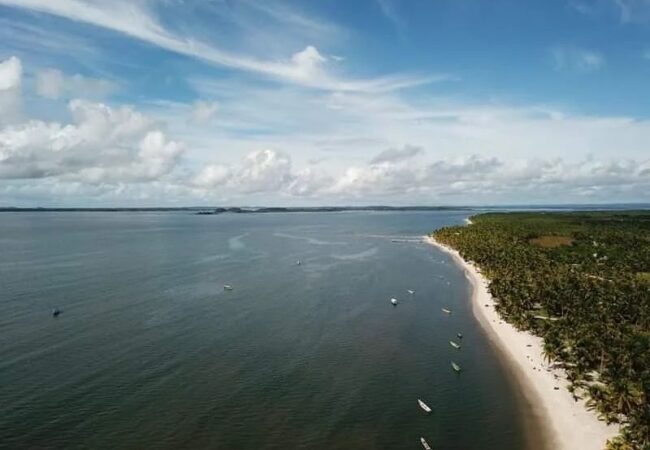
7. Camamu
The place, an ancient village of the Macamamus Indians, had its first records in 1560, when the Jesuits built the chapel Nossa Senhora da Assunção de Macamamu. Its main tourist attraction is the boat trip to Camamu Bay, the third largest in Brazil.
In the place there are untouched islands, small villages and the exaltation of the culture of traditional peoples.
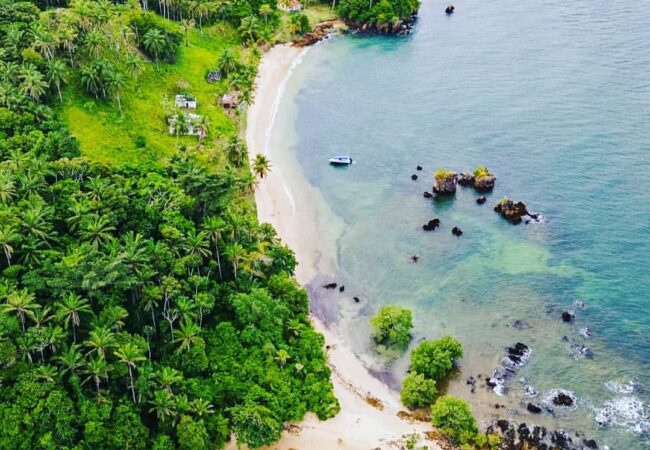
Tourist attractions of the Dendê Coast
- Tourist Guide of Barra Grande on the Costa do Dendê
- Praia do Garcez is close to Salvador and away from stress
- The beach of Taipu de Fora is considered one of the most beautiful in Brazil.
- Morro de São Paulo in Bahia is one of the most beloved destinations in Brazil
- Barra Grande is one of the most beautiful tourism spots in Bahia
- Discover the beauty, gastronomy and leisure of Morro de São Paulo
- Valencia which holds a valuable architectural and cultural heritage
- Natural pools and deserted beaches make the Maraú Peninsula an unmissable getaway
- Features and Tourism in the Tinharé Archipelago in Bahia
- Maraú that keeps the same pace of life as before
- Cairu is a city that offers not only beautiful landscapes but also a lot of culture.
- Boipeba Island combines natural beauty with local originality.
- Boipeba has the luxuries and rusticity of a virgin island in Bahia
- Old colonial town Camamu
- Camamu Bay Tourism Guide
Bahia.ws is the largest tourism and travel guide for Bahia and Salvador.
Tourism and Travel Guide of the Dendê Coast BA
